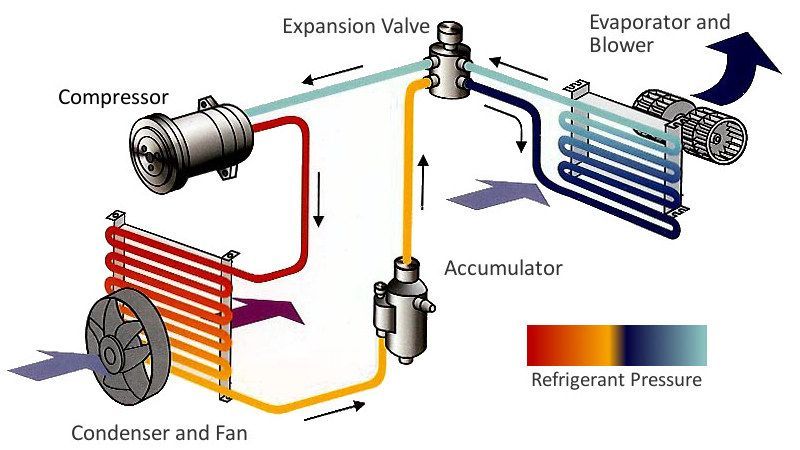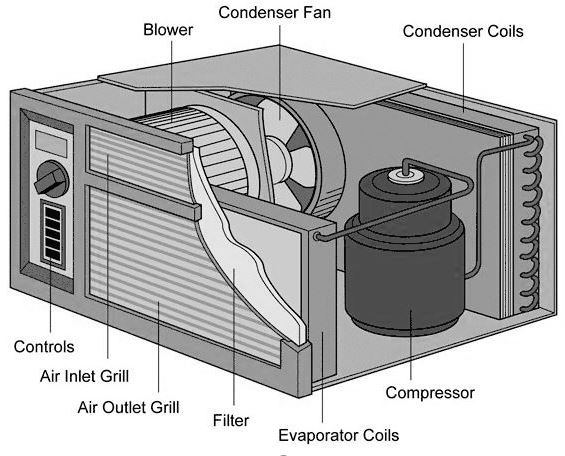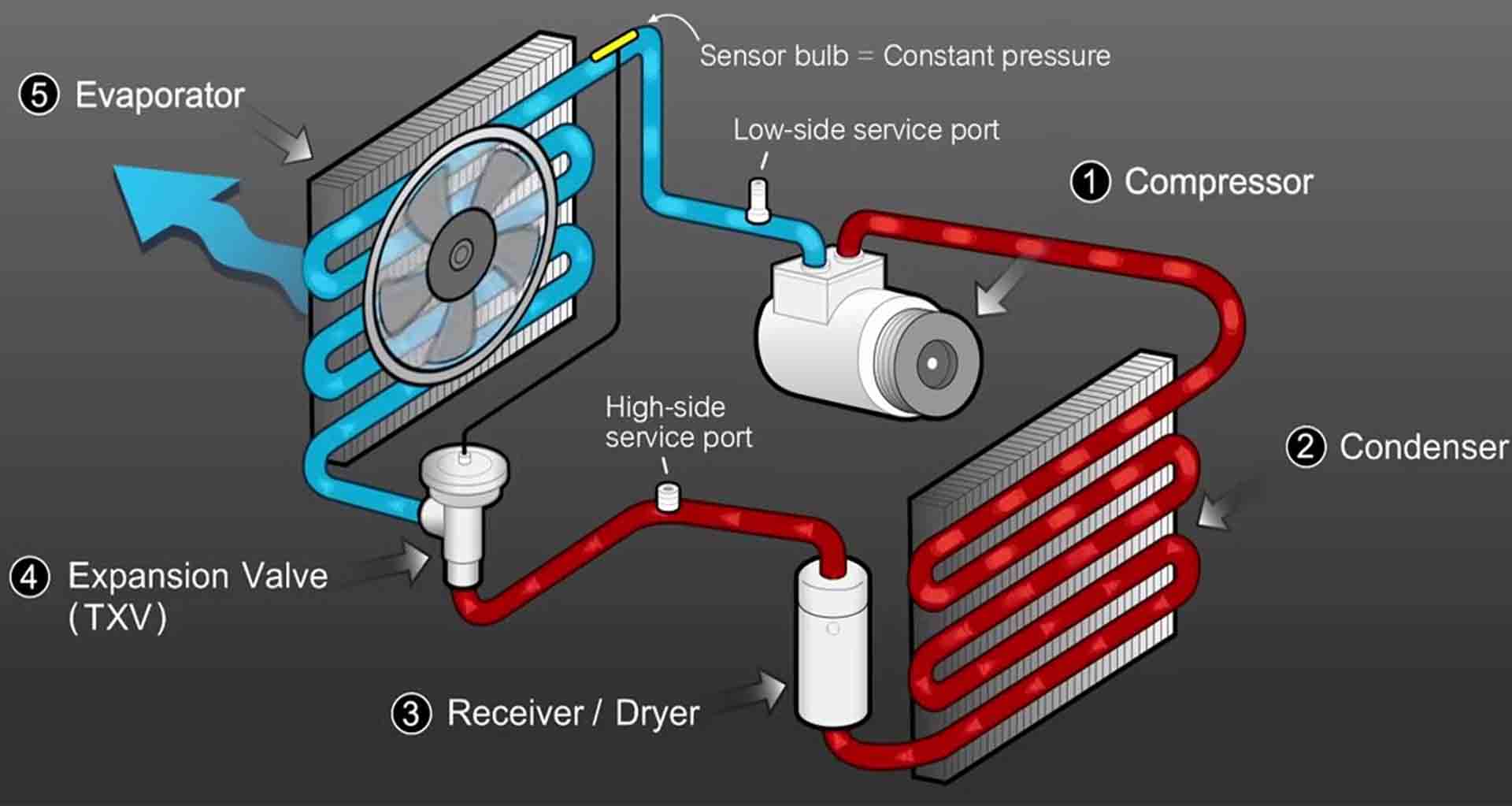What Are The Parts Of An Air Conditioner

Decoding Your AC: A Deep Dive into Air Conditioner Components for Optimal Efficiency
Understanding the inner workings of your air conditioning system is the first step towards maximizing its efficiency, reducing your energy bills, and making informed decisions about maintenance, repairs, or upgrades. Whether you're a homeowner looking to shave off those summer cooling costs, a business aiming for a greener footprint, a smart home enthusiast integrating HVAC control, or an HVAC contractor promoting energy-efficient solutions, this guide breaks down the essential components of an air conditioner and how they contribute to the cooling process.
The Refrigerant: The Cooling Workhorse
At the heart of every air conditioning system lies the refrigerant, a chemical compound that circulates through the system, absorbing and releasing heat. Modern air conditioners use refrigerants like R-410A, chosen for their ozone-friendly properties compared to older refrigerants like R-22, which are now being phased out. However, newer, even more environmentally friendly refrigerants like R-32 and R-454B are gaining traction, boasting a lower Global Warming Potential (GWP) – a crucial factor for sustainability.
The refrigerant's journey begins as a low-pressure, low-temperature gas. It then travels through the compressor, where its pressure and temperature dramatically increase. This high-pressure, high-temperature gas then moves to the condenser.
The Compressor: The System's Pump
The compressor is often considered the heart of the air conditioning system. It's a powerful pump that compresses the refrigerant gas, raising its pressure and temperature. This high-pressure, high-temperature refrigerant is then sent to the condenser.
Energy efficiency is paramount when considering a compressor. SEER (Seasonal Energy Efficiency Ratio) ratings are directly impacted by compressor efficiency. Inverter-driven compressors are increasingly popular due to their ability to adjust cooling output based on demand, leading to significant energy savings compared to traditional single-stage compressors. According to Energy Star, upgrading to a high-efficiency AC with an inverter compressor can cut energy consumption by 20-40%. Some utility companies even offer rebates for installing systems with higher SEER ratings.
The Condenser: Releasing the Heat
The condenser, typically located in the outdoor unit, is responsible for releasing the heat absorbed by the refrigerant. As the hot, high-pressure refrigerant gas flows through the condenser coils, it's cooled by air blown across the coils by the condenser fan. This process causes the refrigerant to condense into a high-pressure, warm liquid. The heat removed from the refrigerant is released into the outside air.
Condenser coils can be made of copper or aluminum. Aluminum coils are generally more affordable but may be more susceptible to corrosion in coastal environments. Maintaining a clean condenser coil is crucial for efficient operation. Dirt and debris can insulate the coils, hindering heat transfer and increasing energy consumption. Regular cleaning, either by yourself or a professional, can significantly improve performance.
The Expansion Valve (or Metering Device): Controlling Refrigerant Flow
After leaving the condenser, the high-pressure, warm liquid refrigerant passes through the expansion valve (also known as a metering device). This valve precisely controls the flow of refrigerant into the evaporator. As the refrigerant passes through the expansion valve, its pressure drops dramatically, causing it to cool significantly.
There are different types of expansion valves, including thermostatic expansion valves (TXVs) and fixed orifice devices. TXVs are more sophisticated and can adjust the refrigerant flow based on the cooling load, leading to better efficiency. Upgrading to a system with a TXV can improve overall system performance, especially in variable climate conditions.
The Evaporator: Absorbing the Heat
The evaporator, usually located in the indoor unit, is where the magic happens. The cold, low-pressure refrigerant flows through the evaporator coils, absorbing heat from the warm air circulating through the air handler. As the refrigerant absorbs heat, it evaporates into a low-pressure gas. The cooled air is then circulated back into the room, providing comfortable cooling.
Like the condenser, the evaporator coil needs to be kept clean for optimal performance. A dirty evaporator coil can restrict airflow, reduce cooling capacity, and increase energy consumption. Regular filter changes are essential to prevent dust and debris from accumulating on the evaporator coil.
The Air Handler: Circulating the Air
The air handler is the indoor unit that circulates air throughout your home or building. It contains the evaporator coil, a blower fan, and air filters. The blower fan draws warm air from the room, passes it over the evaporator coil where it's cooled, and then distributes the cooled air back into the room through ductwork.
Blower motor efficiency is another critical factor. Variable-speed blower motors are becoming increasingly common due to their energy-saving capabilities. These motors can adjust their speed based on the cooling demand, providing consistent airflow and reducing energy consumption compared to traditional single-speed motors.
Ductwork: Delivering the Coolness
Ductwork is the network of channels that distributes cooled air from the air handler to different rooms in your home or building. Properly sealed and insulated ductwork is crucial for efficient air conditioning. Leaky or poorly insulated ducts can result in significant energy loss, as conditioned air escapes into unconditioned spaces.
According to the EPA, duct leakage can account for up to 30% of energy loss from HVAC systems. Sealing and insulating ducts can significantly reduce energy waste and improve overall system efficiency. Consider having your ductwork inspected and sealed by a qualified HVAC professional.
The Thermostat: The Control Center
The thermostat is the control center of your air conditioning system. It senses the temperature in your home or building and signals the AC system to turn on or off to maintain the desired temperature.
Smart thermostats offer advanced features that can further enhance energy efficiency. They can learn your cooling preferences, adjust the temperature automatically based on your schedule, and even be controlled remotely via a smartphone app. Many smart thermostats also provide energy usage reports, allowing you to track your energy consumption and identify areas for improvement. Integration with other smart home devices, like occupancy sensors, can further optimize energy savings by adjusting the temperature based on whether a room is occupied.
Smart HVAC Integration: The Future of Cooling
Integrating your air conditioning system with smart home technology offers numerous benefits, including increased energy efficiency, enhanced comfort, and remote control. Smart thermostats are just the beginning. Adding smart sensors to monitor temperature and humidity in different rooms allows for more precise control and targeted cooling. Smart zoning systems enable you to control the temperature in different areas of your home independently, eliminating the need to cool unoccupied spaces. These systems optimize comfort, reduce energy waste, and extend the lifespan of your equipment.
"Upgrading to a smart thermostat is one of the easiest and most cost-effective ways to improve your home's energy efficiency," states Energy Star.
Conclusion: Knowledge is Power (and Savings!)
Understanding the components of your air conditioning system empowers you to make informed decisions about maintenance, repairs, and upgrades. By prioritizing energy efficiency and embracing smart home technology, you can significantly reduce your energy bills, improve your comfort, and contribute to a more sustainable future. Remember to consult with a qualified HVAC professional for personalized advice and expert installation to ensure your system operates at peak performance. Explore available rebates from your local utility company and government programs like Energy Star to further offset the cost of upgrading to a more energy-efficient system. Investing in a well-maintained and energy-efficient AC system is an investment in your comfort, your wallet, and the environment.










